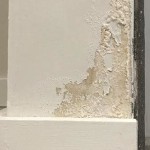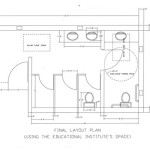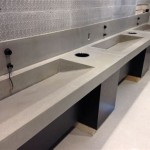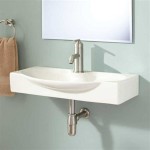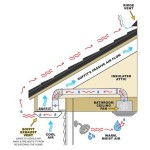Bathroom Basin Not Draining: Causes, Diagnosis, and Solutions
A slow or completely blocked bathroom basin drain is a common household plumbing issue that can range from a minor inconvenience to a significant disruption. Understanding the potential causes, diagnostic methods, and effective solutions is crucial for homeowners to address this problem efficiently and potentially avoid costly professional plumbing services.
The functionality of a bathroom basin relies on the free flow of water through the drain system. When this flow is impeded, water accumulates in the basin, rendering it temporarily unusable. Several factors can contribute to this blockage, often related to the materials commonly found entering the drain or the design of the plumbing itself.
Common Causes of Bathroom Basin Drain Blockages
Several culprits are frequently responsible for bathroom basin drain problems. Identifying the most likely cause is the first step in selecting the correct solution.
Hair: Hair is a primary offender in drain blockages. Strands of hair, whether from washing hair or shaving, tend to accumulate in the drainpipe. The texture of hair allows it to easily snag on rough surfaces and trap other debris, gradually forming a large, obstructive mass.
Soap Scum: Soap scum is a residue formed from the combination of soap, hard water minerals (calcium and magnesium), and bodily oils. Over time, this sticky substance coats the inside of the drainpipe, narrowing the passage and hindering water flow. Certain types of soap, particularly bar soaps containing talc or fats, exacerbate soap scum buildup.
Personal Care Products: Various personal care products, such as toothpaste, shaving cream, facial scrubs containing small particles, and even some cosmetics, can contribute to drain blockages. These products often contain solids that don’t dissolve easily in water and can accumulate along the drainpipe walls, particularly when combined with hair and soap scum.
Small Objects: Occasionally, small objects like jewelry, contact lenses, or small pieces of plastic may accidentally fall into the basin drain. These objects can become lodged in the drainpipe, causing an immediate and complete blockage. Even seemingly insignificant items can cause major problems.
Mineral Deposits: In areas with hard water, mineral deposits, primarily calcium and magnesium, can build up inside the drainpipe. These deposits gradually reduce the drain's diameter, eventually restricting water flow. Mineral buildup is a long-term problem that requires periodic maintenance to prevent severe blockages.
Grease and Oil: While less common in bathrooms compared to kitchens, the occasional disposal of oily substances (e.g., from hair products) down the drain can contribute to blockages. Grease solidifies as it cools, clinging to the pipe walls and trapping other debris.
Diagnosing the Drain Problem
Before attempting any solutions, accurately assessing the nature and severity of the blockage is essential. A systematic approach to diagnosis can save time and prevent further complications.
Observe Water Drainage: The first step is to carefully observe how the water drains from the basin. Is it draining slowly, or is it completely blocked? A slow drain suggests a partial blockage, while a completely blocked drain indicates a more significant obstruction. Note how much water is accumulating and how long it takes to drain.
Check the Pop-Up Stopper: The pop-up stopper, a common feature in bathroom basins, can often be the source of the problem. Lift the stopper and examine it for accumulated hair, soap scum, or other debris. Remove any visible obstructions and retest the drain.
Inspect the Visible Drainpipe: If possible, visually inspect the accessible portion of the drainpipe under the sink. Look for any signs of kinks, bends, or damage that might be restricting water flow. Also, check for any obvious leaks or loose connections.
Listen for Gurgling Sounds: If the drain makes gurgling sounds when water is draining, it may indicate a partial blockage or a problem with the drain's venting system. Gurgling can also suggest a blockage further down the drain line.
Use a Plunger: A plunger can be a useful diagnostic tool. Place the plunger over the drain opening, ensuring a tight seal. Apply firm, consistent pressure to create suction and dislodge any potential blockages. If the plunger dislodges something, observe what comes up and re-evaluate the situation.
Check Other Drains: If multiple drains in the bathroom or house are experiencing similar drainage problems, it may indicate a blockage further down the main drain line, requiring a more comprehensive plumbing inspection.
Solutions for Clearing a Blocked Bathroom Basin Drain
Once the likely cause of the blockage has been identified, the appropriate solution can be implemented. Starting with the simplest methods and progressing to more involved techniques is generally recommended.
Manual Removal of Obstructions: The simplest and often most effective solution is manually removing any visible obstructions. With the pop-up stopper removed, use a tool such as a bent wire hanger or a pair of tweezers to carefully extract hair, soap scum, or other debris from the drain opening.
Plunging: Plunging is another readily available and often effective method. Ensure there is enough water in the basin to cover the cup of the plunger. Create a tight seal around the drain opening and apply vigorous up-and-down motions for several minutes. This can dislodge minor blockages.
Hot Water Flush: Flushing the drain with very hot (but not boiling, which can damage PVC pipes) water can help dissolve soap scum and loosen minor blockages. Run hot water down the drain for several minutes, observing whether the flow improves.
Baking Soda and Vinegar Solution: A mixture of baking soda and vinegar can create a chemical reaction that helps break down organic matter in the drain. Pour one cup of baking soda down the drain, followed by one cup of white vinegar. Let the mixture fizz for 30 minutes, then flush with hot water. This method can be repeated if necessary.
Drain Snake/Auger: A drain snake, also known as a plumbing auger, is a flexible tool designed to reach further down the drainpipe and break up or retrieve blockages. Insert the drain snake into the drain opening and carefully rotate it as you advance it down the pipe. If you encounter resistance, continue rotating the snake to break up the blockage or hook onto it for removal. After using the snake, flush the drain with hot water.
Chemical Drain Cleaners: Chemical drain cleaners should be used with caution and as a last resort, as they can be corrosive and potentially damage pipes, especially PVC pipes. Always follow the manufacturer's instructions carefully and wear appropriate safety gear, such as gloves and eye protection. Avoid mixing different types of drain cleaners, as this can create dangerous fumes. If chemical drain cleaners are ineffective after following the instructions, consult a professional plumber.
Disassembling the Drainpipe: If other methods fail, disassembling the drainpipe under the sink may be necessary. Place a bucket underneath the drainpipe to catch any water. Loosen the slip nuts connecting the P-trap (the curved section of pipe) and other drain components. Carefully remove the P-trap and clean out any accumulated debris. Reassemble the drainpipe, ensuring all connections are tight and leak-free. Run water to check for leaks.
Cleaning the Pop-Up Stopper Mechanism: Even if the main drain is clear, the pop-up stopper mechanism itself can become clogged with hair and grime. Disconnect the linkage connecting the stopper to the drain lever. Remove the stopper and thoroughly clean it, as well as the surrounding drain opening. Reassemble the mechanism, ensuring it operates smoothly.
Preventive Measures: Regular maintenance can significantly reduce the likelihood of future drain blockages. Consider using a drain strainer to catch hair and other debris before they enter the drain. Periodically flush the drain with hot water and a baking soda and vinegar solution to prevent buildup. Avoid pouring grease or oil down the drain. Regular cleaning and preventative measures are far less disruptive than dealing with a full blockage.
If these solutions prove ineffective, seeking professional assistance from a qualified plumber is recommended. Attempting more complicated repairs without proper knowledge and tools can potentially worsen the problem and lead to costly repairs and pipe damage. A professional plumber possesses the expertise and equipment to diagnose and resolve complex drain blockages efficiently and safely. They can also identify underlying plumbing issues that may be contributing to recurring drain problems.

How To Fix A Bathroom Sink That Won T Drain Bfp Bay Area

Why Is My Bathroom Basin Not Draining Living By Homeserve

5 Natural Ways To Unclog A Bathroom Sink Hiller How

How To Unclog A Bathroom Sink The Home Depot

How To Unclog A Bathroom Sink Hana S Happy Home

Why Is Your Bathroom Sink Clogged Order A Plumber

How To Unclog A Bathroom Sink The Home Depot

How To Fix Pop Up Drain Waste Plug

How To Unclog A Bathroom Sink

Slow Sink Drain 6 Diy Fixes For Before You Call A Plumber Bob Vila
Related Posts
